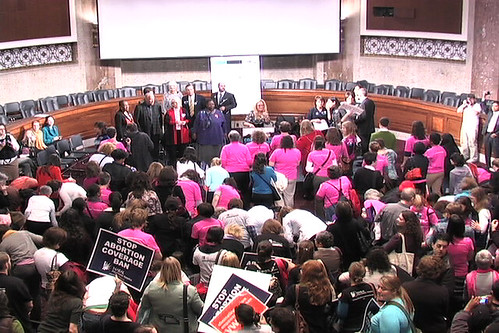News of a steep hike in tuition fees at University of California public schools have students riled up at campuses across the UC system.
The UC’s Board of Regents met at UCLA on Wednesday to approve a plan which will raise next year’s undergraduate fees by an astounding 32%. UC President Mark Yudof told
The New York Times that the fee increase was the university’s only choice in light of significant state budget cuts in the last decade. Yudof explained that the university system currently receives half as much, per student, as it did about twenty years ago.
Despite current measures in place which have slashed staff salaries, laid off teaching assistants, eliminated free printing for students and cut library hours, the board insisted that the university will be unable to maintain the same level of academic excellence without raising tuition.
Anger within the student body was most acutely felt at UCLA, where students from across the university system rallied outside the board’s meeting. Protests at times turned nasty, leading to the arrests of several students and accusations of police brutality.
Darlene Tran, a sophomore at UCLA, received bruises to her chest and wrist courtesy of officers responding to protests outside the meeting. Tran said she was chanting with a mass of students blocking the board members’ exit from a university building. She explained that she and others were demonstrating peacefully, but officers used unnecessary force when they pushed through the crowd to clear an exit path.
“From my perspective, I understand why they did it,” admitted Tran. “But I don’t think they needed to have been so aggressive. It was almost brutal, in a way.”
Tran noted that the Board of Regent’s meeting had originally been scheduled to take place on a day earlier on Thursday. She believes that the rescheduling was a deliberate attempt to thwart students’ plans to assemble. Students representing every institution in the UC system planned to bus to rallies at UCLA, but arrived a day late.
“We thought it was very sketchy,” said Tran.
In a last ditch attempt to convince the board to reverse its decision, some students stormed Campbell Hall, a building on UCLA’s campus, and occupied it from 2 a.m. to 7 p.m. Thursday in protest.
Tran noted that the protests had hit a particularly sensitive chord with students.
"We’re students, we can not handle this fee increase," said an exasperated Tran. She believes many students will be forced to drop out of school because of the increased fees. "We’re smart and we’re knowledgeable. We know there are other ways, there are other solutions, but we want to be protesting.”
Senior Sharya de Silva said the vigorous demonstration was a unique display of a particularly emotional student body.
“It was more students than I have seen in a long time. When it first started on campus, I would say at least 300 kids [were protesting],” explained Silva. “But then when we walked down Westwood Blvd…another group of students showed up. I think while marching we had around 600 kids.”
She described the scene outside Covel Hall, a building on UCLA’s campus, as “a mad house,” and said she believes about 1000 were protesting there.
Silva echoed sentiments of undue police force against what she described as passionate but nonviolent protest.
“I saw one officer swinging a baton around to try and clear room,” she said. “In the process he hit two guys and almost hit me. This one girl was actually trying to help the cops by calming the crowd down, and they got her. It was sad, she just hit the ground.”
Silva believes the police “didn't know how to handle the volume of students with that much passion,” and their actions were preemptive measures taken in fear that protests would turn violent.
Despite the widespread discontentment in regard to increased fees and the fervor demonstrated by protesters, some students questioned the effectiveness of such displays.
“Everyone is unified in their opinion about it, well, sucking, but not everyone supports the protests,” said junior Nathan Stein. He said the demonstrations are “causing a lot of disturbance to people living in the dorms and not accomplishing much.”
Both Tran and Silva confessed that they believed the decision made by the Board of Regents will likely stick.
Protests have currently died down, though students continue to stew over the possible implications the increase.
For now though, students must turn their thoughts to another problem: finals. Exams for the fall semester will begin taking place in a matter of days. Little time, said Stein, to worry about tuition.
“I think most students are spending their time studying,” he said.












